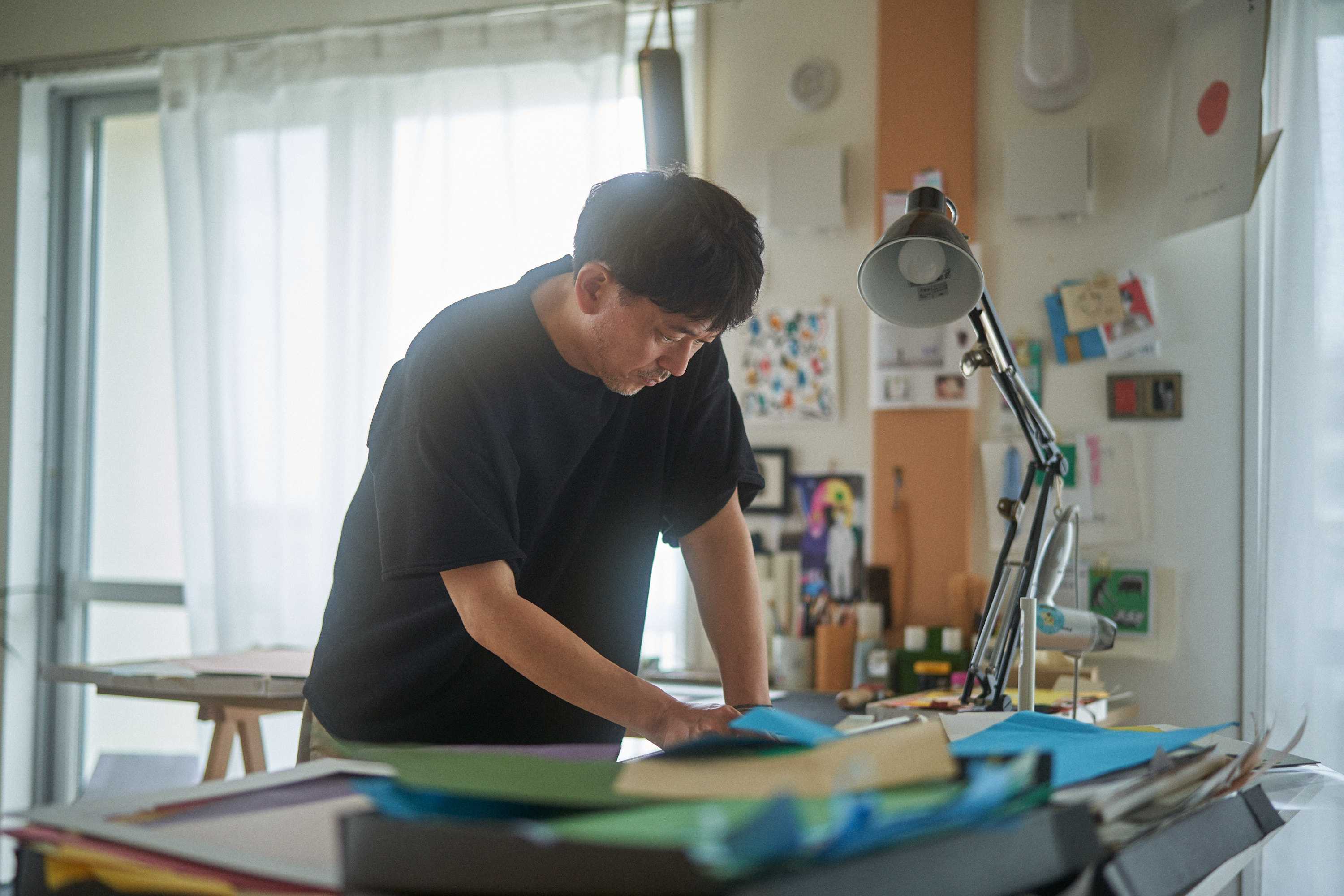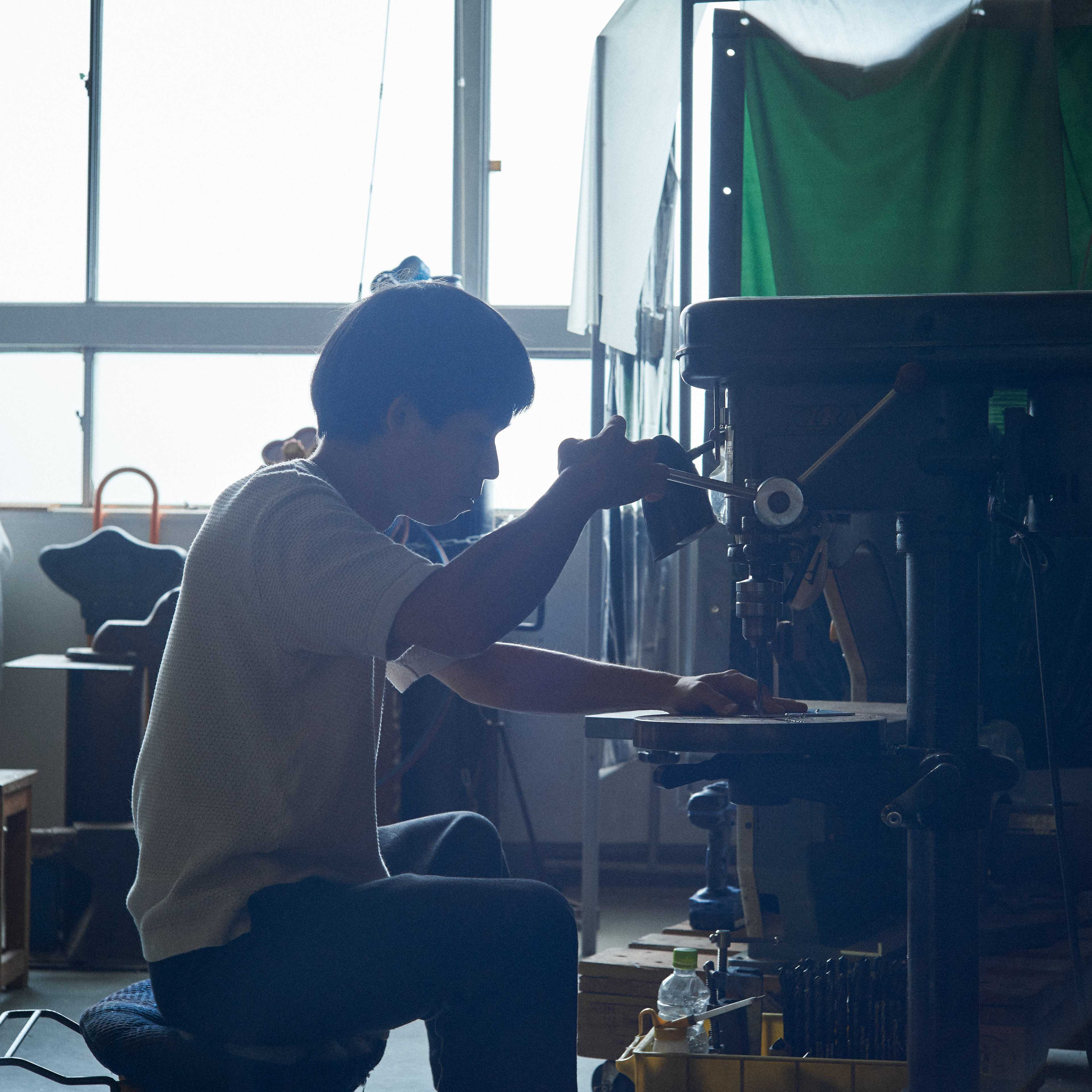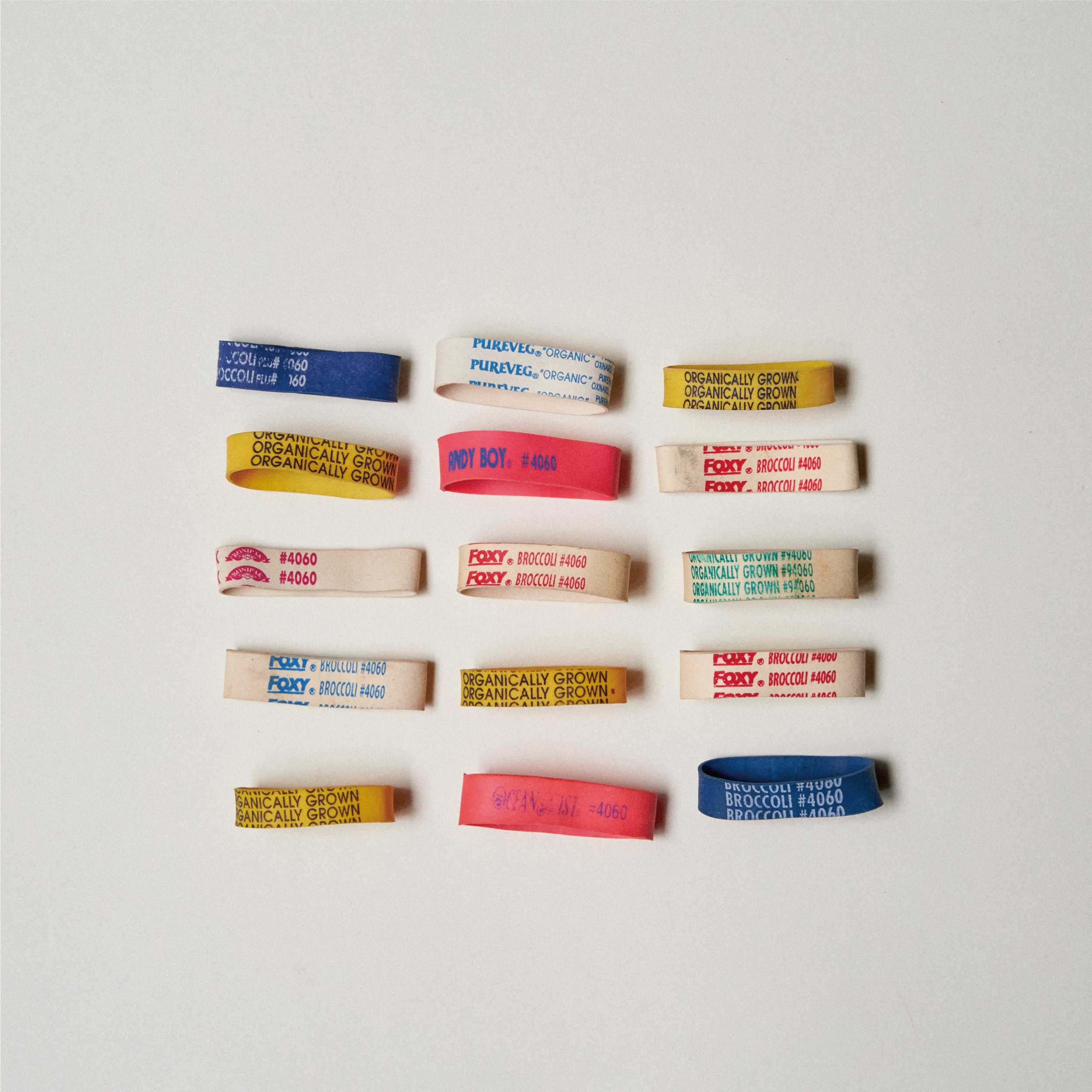Behind the scenes with Taku Bannai
Taku Bannai is the first artist to feature in Life on two wheels, our illustrated series about the simple pleasures and universal joys of cycling. Based in Tokyo, the artist creates his works using kiri-e, the art of papercutting. The resulting scenes are simple yet layered, familiar yet anonymous, clear yet open to interpretation. It’s this sense of ambiguity that shifts his work from mere “images” to scenes that develop and evolve over time. Venturing to his atelier, located on the top floor of an apartment complex in Nishi Tokyo, we sought out the inspiration, tools and thinking behind his works.

Bannai composed his early works like a jigsaw puzzle. Painting pieces of paper with various colours, he would then cut them carefully into shapes to be fitted together. Through this process, he became drawn the power of the cut line. While he no longer paints on paper ― “the possibilities are too great” ― and prefers to layer the paper, his interest in the cut line endures as the foundation of his work as an artist.

When it comes to creating these lines, Bannai opts for a standard cutting knife. On some occasions he will use a ruler as a rough guide, but even then he prefers the fluidity of working freehand. This approach produces lines with an undulating appearance that mimics the natural contours of the landscape.

Bannai’s vast collection of papers is roughly divided into collections of warm, cool and neutral tones. The balance of colour, texture and weight is essential. “I need to create a three-dimensional, sculptural feel,” says Bannai, who favours Tanto series papers for their muted texture and myriad colours. Semi-transparent tracing paper also plays an important role, allowing him to create subtle shadows and forms.


Bannai is drawn to scenes that, rather than being exceptional, could be considered somewhat “average” and are often overlooked in daily life. He also finds inspiration within existing images and photographs, often honing in on certain fragments like “curtains that look like mountains”. His bookshelf spans a range of genres, from the collages of Alex Katz to titles by Bruno Munari, Derek Jarman, Philippe Weisbecker and Agnes Martin.

Building a scene begins with the background ― land and sky ― and concludes with the addition of hints of bold colour and details that catch the eye. Bannai also adds extra cuts, pencil lines and other marks to the surface, which may appear accidental at first, but are designed to help the viewer to navigate the scene.

Asked if there is a common thread between his works, Bannai ponders the question for some time, before responding simply with “yohaku” . In other words, each scene is left open to interpretation, allowing the viewer to complete the narrative based on their own viewpoint.

With a deft touch, Bannai builds scenes to be explored. Each one of his creations represents a journey, rather than a destination.

Text by Ben Davis
Photo by Daisuke Hashihara




